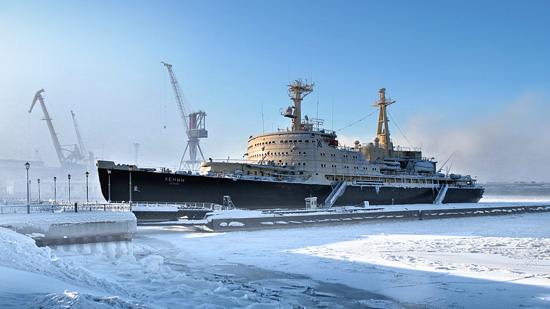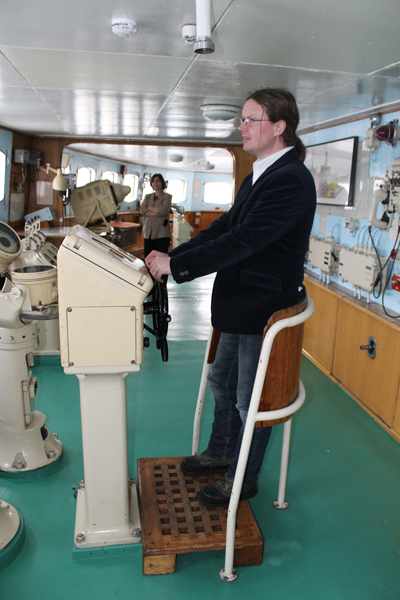The Arctic Centre of the University of Lapland with its partners Polaria, in Tromsoe (Norway) and Atomflot in Murmansk (Russia) have been granted 1.2 million euros by Kolarctic ENPI CBC program to produce a science and historical exhibition on board Icebreaker Lenin. The project also aims at implementing activities related to education and tourism development in the exhibitions in each partner’s region.
The Arctic Centre will be the lead partner and act as the main
exhibition producer in the project
Arctic Expo Centre – Nuclear-Powered
Icebreaker Lenin – ICE.
Polaria and Arctic Centre are already well-established exhibition
centres while Arctic Expo Centre in Murmansk is in its initial stages to
develop into a science and exhibition centre. The project will enable
the project-partners to share expertise and thereby to build a new
science exhibition centre focusing on the Arctic. The project also
facilitates the creation of an Arctic exhibition centre network in the
concerned regions, enhancing future opportunities for development of
tourism and education related activities.
“Through exchange of expertise and share of experiences each member will
increase the opportunities to develop its own exhibition and activities
such as education package for teachers and pupils on certain issues,
special tours for tourists”, says chief executive producer Nicolas
Gunslay, Arctic Centre.
The aim of the project is to develop new exhibitions and innovative
communication tools as a means to improve the information on local and
cross-borders concerns. This will help to facilitate a mutual
understanding among neighbouring people about common issues and the
Arctic.
“The goal is to raise awareness on topics related to the Arctic marine environment, climate change, and globalisation.”
As the exhibition is planned on board Icebreaker Lenin, the goal is also
to tell about the technology and history of icebreaking. These goals
will be achieved through the planning and implementation of a science
and historical exhibition and the development of common education and
edutainment activities. Each centre will get identical exhibition
elements that enable the sharing of important and up to date Arctic
issues among the visitors in the different countries.
“The project provides a unique opportunity to support and develop joint
education activities and to have a tool to disseminate important issues
regarding the Arctic and its vulnerable environment.”

Icebreaker Lenin is the world's first nuclear powered surface ship and
the first nuclear powered civilian vessel. It has permanent berthing in
Murmansk.
Icebreaker Lenin:
• Launched on 1957 and made operational in 1959
• The world's first nuclear powered surface ship and the first nuclear powered civilian vessel
• Length 134 meters, width 27.6 m and height 16.1 m
• Displacement 16,000 tones
• While in operation, it had a crew of 240 persons
• Left service in 1989 for permanent berthing in Murmansk
• Is now a museum, soon also a science centre
More information:
Chief Executive Producer Nicolas Gunslay, Arctic Centre, tel. +358 40 735 7296, nicolas.gunslay(at)ulapland.fi
Science Centre of the Arctic Centre
Arctic Expo Centre – Icebreaker Lenin

Science communicator Ari Laakso on the board of the Icebreaker Lenin. Photo: Nicolas Gunslay
ULapland/Arctic Centre/Marjo Laukkanen